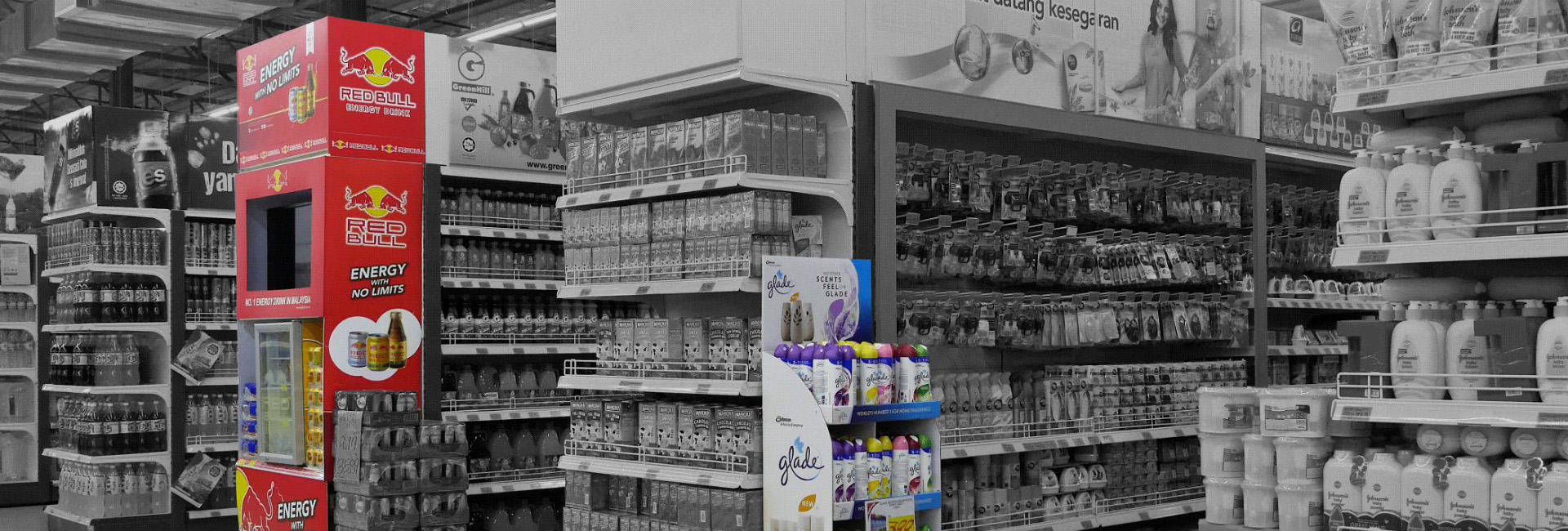POS display best practices and how to measure their impact
Point-of-sale displays are a diverse field that provides enormous opportunities for increasing sales (by as much as 20%) and building your brand but can also be a huge waste of money if not done right – suboptimal displays lose 25% of the sales potential.
We already spoke about how a good POS display can boost sales in any phase of the product cycle – but what is it that makes a display good? How do you know that the money you are investing in this additional opportunity to be seen by your shoppers will be a good ROI?
Over the years, EyeSee tested and analyzed hundreds of stimuli on thousands of shoppers when it comes to POS materials. Doing this for our clients enabled us to realize what are some of the best practices when it comes to POS display design.
There are several things which matter most when it comes to displays and their effectiveness and represent the most relevant of display KPIs: In-store Visibility, Attention, Likability and Share of shoppers. These are tested remotely, using a combination of eye tracking, survey, and virtual shopping.
We compiled a meta-analysis from the POS studies (+50 displays from multiple industries) we did in the last 6 months and found several insights that you should keep in mind when designing a new display. We coded each display based on 7 variables:
- People: With vs Without people
- Functional benefit: Not shown vs Communicated
- Product prominence: Center vs Side position
- Copy style: Small vs Large copy
- Copy length: Short copy text vs Long copy text
- Call to action: No call to action vs With a call to action
- Branding: No brand vs With embedded branding

How does the testing work? The client delivers the stimuli and defines the objectives of the research. EyeSee programs and conducts the study – the respondents participate from their homes, then our researchers analyze the findings and deliver a full report within 2.5 weeks.
Attracting attention and making your product stand out in a crowded store environment is the first step in any display evaluation. Our research has shown that a few display features drive an increase in visibility: Including a functional benefit, large copy style but without people shown on the display.

First off, displays without people tend to show a higher impact on in-store visibility. This might sound surprising but adding people to a display might make the display too messy or cluttered.
Including a functional benefit of the product brings an increase in visibility in comparison to displays without a demonstrated benefit. Think more about highlighting the efficiency, taste or a health benefit of the product, rather than not including a benefit at all and just adding a vague tagline.
Additionally, we have found a connection between having a larger copy in the design and a higher impact on visibility.

Okay, you’ve managed to grab the attention of the shopper – so how do you keep it now? For how long do they look at your display when walking around the store?
Our studies have shown that there is a significant increase in attention to the display if there are no people shown, with a clearly communicated functional benefit, and with the product positioned on the side rather then in the center. Along with that, similarly to visibility, a larger copy style, and additionally, embedded branding, all have a higher impact on the time shoppers spend looking at the display.

If you want to maximize sales, you need to have both high visibility and high likability present.
In this study, we have found no strong discriminative display features when it comes to likability. The biggest impact is by copy style. Probably because the bigger the copy is, the easier it is to read. In general, Likability is more related to overall brand perception and appeal than it is to specific display features.

Finally, we need to set out to answer one of the most important questions when it comes to POS displays – will your shoppers buy the product when they encounter it? Our meta-study shows that having your branding embedded in the design is a big driver for impacting sales at your POS display.
Limitations of the meta-study
However, it is important to have in mind the limitations of this meta-analysis. Meta-analyses are not clean experimental designs of the variables. The location of the display in the stimuli, the category, and the brand strategy can greatly affect the performance of the display. This meta-study consisted of several tests done for the same product but with individual campaign variations containing the same elements, which can also affect its results. If POS communication is important for your sales or you spend a significant budget on POS communication, it is recommended to conduct a best practice study based on +50 displays of your category (your own brand’s and your competitor’s).
To conclude, out of the displays we tested, the best performing display is 4 times more visible than the worst performing display. Accordingly, it could boost sales 7 times more efficiently than the worst performing display. If you are designing a display that needs to stand out in a crowded supermarket, we recommend taking into account all of the different variables that could be affecting its performance, and exploring what are the specific advantages and disadvantages, and the potency of a given design.
Interested in testing POS displays? Get in touch via [email protected] or find out more on the topic by checking out a case study we did in collaboration with Smurfit Kappa.
